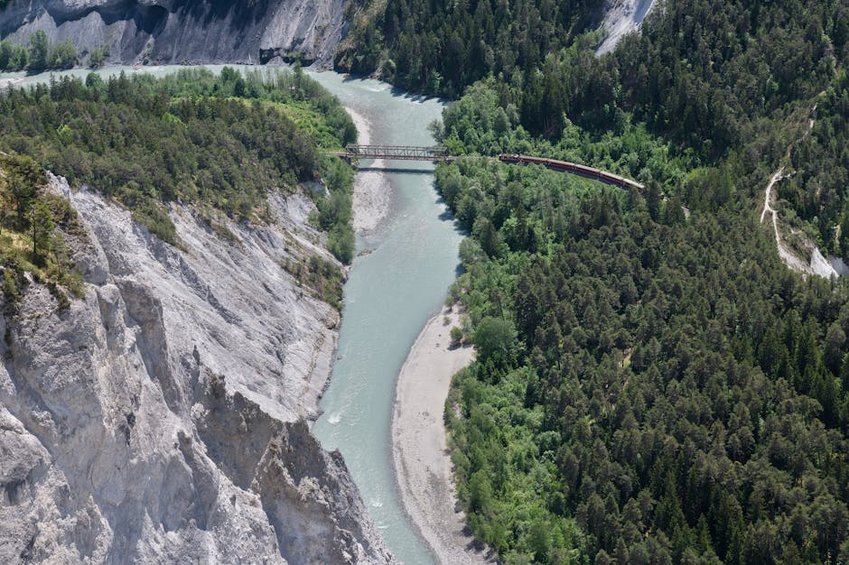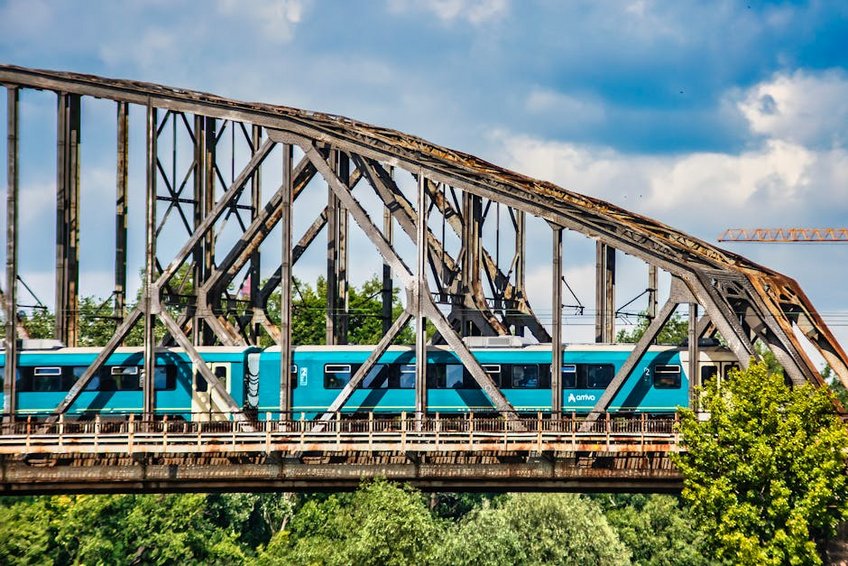Train Travel Guide in Europe
Exploring Europe by train offers one of the most magical and efficient travel experiences you can imagine. This comprehensive train travel guide in Europe will show you how to navigate the continent’s extensive rail network, from high-speed connections between major cities to scenic regional routes through breathtaking landscapes. Whether you’re planning a whirlwind tour of capitals or a leisurely journey through countryside villages, train travel provides unparalleled access to Europe’s diverse cultures and hidden gems. You’ll discover that trains aren’t just transportation—they’re an integral part of the European experience, combining comfort, sustainability, and adventure in ways no other mode of travel can match. This guide covers everything from booking strategies and money-saving tips to cultural insights that will transform your European rail journey into the trip of a lifetime.
Train Travel Guide in Europe Essential Information
Understanding Europe’s rail system is the foundation for an amazing journey. The continent boasts one of the world’s most developed railway networks, with connections spanning from Portugal’s Atlantic coast to Turkey’s eastern borders. Modern high-speed trains like France’s TGV, Germany’s ICE, and Spain’s AVE can whisk you between cities at speeds exceeding 180 mph, while regional services provide access to smaller towns and rural areas. The beauty of European train travel lies in its diversity—you might find yourself on a state-of-the-art double-decker train one day and a charming historic railway the next. What makes this system particularly appealing for travelers is its integration across borders, though you’ll need to understand some key differences between countries and rail operators to maximize your experience.
European Rail Network Overview – What You Need to Know
- Western Europe features the most developed high-speed networks with frequent connections between major cities
- Eastern European countries often have older but more affordable rail systems with incredibly scenic routes
- Scandinavian trains prioritize comfort and reliability, often featuring stunning views of fjords and forests
- Mountain regions like the Alps offer some of the world’s most spectacular railway engineering achievements
- Budget traveler: $50-100 daily using regional trains, overnight journeys, and advance bookings
- Mid-range traveler: $100-200 daily with mix of high-speed and regional trains, comfortable accommodations
- Luxury traveler: $200-400+ daily featuring first-class tickets, scenic luxury trains, and premium experiences
- Eurail Official Website
- Man in Seat 61 Comprehensive Rail Guide
- Rail Europe Booking Platform
Key Documentation and Preparation
Before embarking on your European rail adventure, ensure you have the proper documentation. While many European countries participate in the Schengen Agreement allowing border-free travel, some eastern nations still require passport checks. Always carry your passport when crossing international borders, even within the EU. For ticket validation, most European railways require you to stamp paper tickets at station machines before boarding—failure to do so can result in hefty fines. Digital tickets on your smartphone have become increasingly common, but always ensure your device is charged and accessible. It’s also wise to have both digital and physical copies of important documents including reservations, rail passes, and insurance information.

Train Travel Guide in Europe Planning Your Trip
Strategic planning transforms a good rail journey into an extraordinary one. The first decision you’ll face is whether to purchase individual point-to-point tickets or invest in a rail pass. For extensive travel covering multiple countries, rail passes often provide better value and flexibility. However, if you’re focusing on a specific region or booking well in advance, individual tickets might be more economical. Consider your travel style—do you prefer spontaneous exploration or carefully scheduled itineraries? Your answer will determine whether a flexible pass or advance-purchase discounted tickets suit you best. Remember that popular routes and high-speed trains often require seat reservations beyond your rail pass, so factor those additional costs into your budget planning.
Best Time to Visit Europe for Train Travel
Europe offers distinct seasonal experiences for rail travelers. Spring (April-June) provides mild weather, blooming landscapes, and smaller crowds before the summer rush. Summer (July-August) brings peak tourism, longer daylight hours, and vibrant festival atmospheres, but also higher prices and crowded trains. Autumn (September-October) treats you to spectacular foliage, harvest festivals, and comfortable temperatures with reduced tourist numbers. Winter (November-March) offers Christmas markets, snowy landscapes, and the lowest prices, though some scenic routes may have reduced service. Shoulder seasons typically provide the best balance of good weather, manageable crowds, and reasonable pricing for your European train adventure.
Budget Planning and Costs
Essential Preparation Checklist
Proper preparation ensures smooth travels across European railways. Start by downloading essential apps like Rail Europe, DB Navigator, or Trainline for real-time schedules and mobile tickets. Pack light—you’ll appreciate manageable luggage when navigating stations and train corridors. Include a universal power adapter for charging devices onboard, as many modern trains offer power outlets. A reusable water bottle and snacks will keep you comfortable between station stops. Don’t forget comfortable walking shoes for exploring destinations between trains. Finally, research local SIM cards or EU roaming plans to maintain internet access for last-minute schedule checks and navigation assistance throughout your journey.
Train Travel Guide in Europe Top Attractions and Activities
European train journeys themselves often become destination experiences. The continent boasts some of the world’s most spectacular railway routes that transform transportation into unforgettable adventures. From alpine crossings that defy engineering logic to coastal routes with ocean vistas, these journeys deserve placement on your itinerary as activities rather than mere transitions. Beyond the rails themselves, train travel provides unparalleled access to Europe’s cultural treasures—you can breakfast in Paris, lunch in Brussels, and dinner in Amsterdam all in the same day. The convenience of city-center to city-center connections means you maximize your time exploring rather than traveling to and from distant airports. This accessibility makes European train travel particularly rewarding for culture enthusiasts, history buffs, and those seeking authentic local experiences.
Must-See Highlights
Every European rail journey should include certain iconic experiences. The Glacier Express in Switzerland offers eight hours of continuous alpine beauty between Zermatt and St. Moritz. Germany’s Romantic Road connects medieval towns via rail and bus, showcasing storybook Germany at its finest. France’s TGV from Paris to Marseille delivers you from capital elegance to Mediterranean glamour in just three hours. The Bernina Express crosses the Alps between Switzerland and Italy, offering UNESCO-recognized engineering marvels. For urban explorers, the Eurostar connection through the Channel Tunnel provides a dramatic London-Paris-Brussels triangle that exemplifies modern European connectivity. These routes represent just the beginning of what European rail networks offer discerning travelers.
Hidden Gems and Local Favorites
Beyond the famous routes lie incredible hidden gems that reward adventurous travelers. Portugal’s Douro Valley line follows the river through terraced vineyards, offering some of Europe’s most stunning wine country scenery. Norway’s Flåm Railway descends from mountain plateaus to fjord villages with waterfalls cascading past your window. Austria’s Semmering Railway, another UNESCO World Heritage site, represents nineteenth-century engineering excellence through dramatic alpine landscapes. For something completely different, Hungary’s Children’s Railway in Budapest features child conductors operating a historic line through beautiful Buda Hills. These lesser-known routes often provide more authentic cultural experiences and significantly smaller crowds than their famous counterparts.
Train Travel Guide in Europe Practical Travel Information
Navigating European railways requires understanding some practical realities. First-class compartments offer more space, quieter environments, and often include amenities like complimentary snacks and drinks. Second-class provides perfectly comfortable travel at lower prices, with many modern trains offering similar seating comfort to first class. Station facilities vary widely—major hubs like Paris Gare de Lyon or Berlin Hauptbahnhof function as miniature cities with shopping, dining, and services, while rural stations might offer little more than a platform and shelter. Understanding luggage policies is crucial: most trains offer overhead racks and end-of-carriage storage, but space can be limited during peak travel times. Always keep valuables with you, and consider using luggage locks for added security during your journeys.
| Category | Options/Features | Price Range (USD) |
|---|---|---|
| Rail Passes | Eurail Global Pass, Country-specific passes, Youth discounts | $200-800+ |
| Point-to-Point | Advance purchase discounts, Flexible tickets, First vs second class | $20-300 per segment |
| Reservations | Mandatory on high-speed trains, Recommended on popular routes | $5-30 per reservation |
| Overnight Trains | Couchette, Sleeper cabins, Seated options | $50-200 per night |


